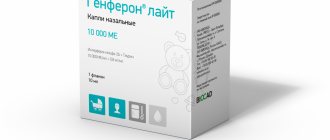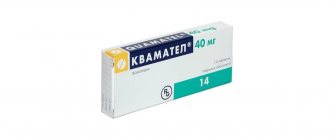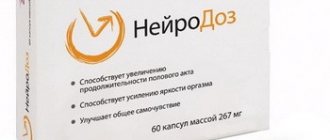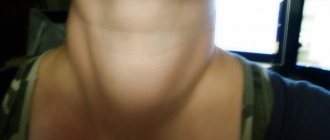pharmachologic effect
Herbal medicine with antiviral action. Flavonoid glycosides contained in the wild cereals Deschampsia caespitosa L. and Calamagrotis epigeios L. are capable of inhibiting virus-specific enzymes thymidine kinase and DNA polymerase in cells infected with herpes simplex viruses (Herpes simplex types 1 and 2). This leads to a decrease in the ability or complete blocking of the replication of viral proteins and, as a result, prevents the reproduction of viruses.
Proteflazid stimulates the production of endogenous alpha and gamma interferons, which increases nonspecific resistance to viral and bacterial infections and normalizes the immune status of the human body.
Indications for use of the drug Proteflazid
Prevention and treatment of infections caused by herpes simplex virus types 1 and 2 (herpetic eczema, herpetic vesicular dermatitis, herpetic gingivostomatitis and pharyngotonsilitis, herpetic keratoconjunctivitis, herpetic meningitis and encephalitis, genital herpes); shingles; complex treatment of hepatitis B and C; to prevent viral and bacterial infections that occur in patients with immunodeficiency; as part of complex therapy for patients with AIDS and HIV infected.
Directions for use and dosage
Proteflazide is available in the form of drops, so before taking the drug must be applied to a piece of sugar or a piece of bread. Take according to the following scheme: 1st week 15 drops per day, dividing the daily dose into 3 doses (5 drops per dose), 2-3 weeks - 30 drops, divided into 3 doses (10 drops per dose), from 4 week 24 drops, divided into 3 doses (8 drops per dose). The course of treatment is 1 month, after 4 weeks a second course is possible. For children under 1 year of age, the drug is prescribed in a dose of 1 drop per day; from 1 to 2 years, the dose of the drug is 2 drops, divided into 2 doses (1 drop per dose); from 2 to 4 years: 1st week – 2 drops per day, divided into 2 doses (1 drop per dose), 2nd week – 4 drops per day, divided into 2 doses (2 drops per dose); from 4 to 6 years: 1st week – 6 drops per day, divided into 3 doses (2 drops per dose), 2nd week – 9 drops per day, dividing the daily dose into 3 doses (3 drops per dose ); from 6 to 9 years: 1st week – 9 drops per day, dividing the dose into 3 doses (3 drops per dose), 2nd week 18 drops per day, divided into 3 doses (6 drops per dose); from 9 to 12 years: 1st week - 12 drops per day, divided into 3 doses (4 drops per dose), 2nd week - 21 drops per day, divided into 3 doses (7 drops per dose); from 12 years of age: 1st week - 15 drops, divided into 3 doses (5 drops per dose), from the 2nd week - 24 drops, divided into 3 doses (8 drops per dose). For children under 6 years of age, it is recommended to dissolve the required dose of the drug in 50 ml of water with sugar. With frequent relapses of infection, it is necessary to carry out 3-4 courses per year, according to the following scheme: 15 drops, divided into 3 doses (5 drops per dose), for 3 days, then 21 drops per day, divided into 3 doses ( 7 drops per dose), for 3 days, then another 3 months 24-30 drops per day, divided into 3 doses (8-10 drops per dose), then it is recommended to switch to maintenance therapy 20 drops per day, divided into 2 doses (10 drops per dose), for 2-4 months.
In case of latent infection, courses of drug therapy are carried out 2 times a year. In the complex therapy of hepatitis B and C, the drug is used according to the following scheme: from days 1 to 3 – 9 drops per day, divided into 3 doses (3 drops per dose), from days 4 to 6, 15 drops per day, divided into 3 administration (5 drops per dose), from day 7, 30 drops per day, divided into 3 doses (10 drops per dose), course of treatment is 4-6 months. You can use Proteflazid topically to treat herpetic lesions of the skin and mucous membranes; for this you need to dissolve 1.5 ml of the drug in 10 ml of 0.9% NaCl, and apply it as a lotion to the affected area 3-5 times a day. For genital herpes, Proteflazide can be used in the form of vaginal tampons. To do this, you need to dissolve 3 ml of the drug in 20 ml of 0.9% NaCl, moisten a gauze swab and insert it into the vagina, carry out the procedure twice a day, if a burning sensation appears, you need to change the proportions of the solution, doubling the amount of NaCl. The course of treatment is at least 14 days.
Special instructions for the use of the drug Proteflazid
Preclinical studies did not reveal any teratogenic, mutagenic or carcinogenic effects. When using the drug Proteflazid in the second and third trimester of pregnancy and during breastfeeding, no undesirable side effects were identified. However, it is necessary to adhere to the general rules for prescribing medications during pregnancy, assessing the benefit/risk ratio. When treating viral hepatitis, 10–15% of patients with severe cytolytic syndrome experience an increase in aminotransferase activity (less frequently, bilirubin level), which does not significantly affect the course of recovery processes in the liver and does not require discontinuation of the drug. No negative impact on the performance of potentially hazardous activities that require special attention and quick response has been identified.
Reviews about Proteflazide
There are numerous positive reviews from doctors and patients about the effectiveness of this remedy in the treatment of infectious diseases. In particular, parents note that the drops used for children had a pronounced antiviral effect.
The drug is also effective as an immunomodulator : reviews of Proteflazide often say that after a course of such treatment the patient began to get sick much less often.
There is a pronounced positive effect of Proteflazide in the treatment of herpetic infections , a decrease in the frequency of relapses after such treatment. Negative impressions of the medicine include its unpleasant taste, as well as its high price.
Proteflazid fl 30ml
COMPOUND
1 ml of drops contains 1 ml of liquid extract Proteflazid (flavonoid content of at least 0.32 mg/ml in terms of rutin, carboxylic acid content of at least 0.30 mg/ml in terms of malic acid) from the herb Herba Deschampsia caespitosa L.) and ground reed grass (Herba Calamagrostis epigeios L.) (1: 1). Extraction solvent: ethanol 96%.
DOSAGE FORM
Drops.
BASIC PHYSICAL AND CHEMICAL PROPERTIES:
dark green liquid with a specific odor.
PHARMACOLOGICAL GROUP.
Direct acting antivirals . ATX code J05A X.
PHARMACOLOGICAL PROPERTIES
Pharmacological.
The flavonoids included in the drug inhibit the replication of DNA and RNA viruses both in vitro and in vivo. During preclinical and clinical studies, the antiviral effect of the drug against herpes viruses, hepatitis, papillomaviruses, HIV infection, influenza and acute respiratory infections was identified and proven.
It has been proven that the mechanism of direct antiviral action is the suppression of virus-specific enzymes - DNA and RNA polymerase, thymidine kinase, reverse transcriptase and neuraminidase.
The drug has immunotropic properties. Protects mucous membranes, normalizing local immunity (lactoferrin, secretory immunoglobulin A, lysozyme and C 3 component of complement).
It has been established that the drug is an inducer of the synthesis of endogenous α- and γ-interferons at a physiologically active level, increases the body’s nonspecific resistance to viral and bacterial infections.
Clinical studies have shown that if taken daily, according to age-specific doses and dosage regimens, the drug does not have an immunotoxic effect and does not cause refractoriness (hyporeactivity) of the immune system: inhibition of the synthesis of alpha and gamma interferons is not observed, which allows, if necessary, to use the drug During a long time.
The drug has antioxidant activity, inhibits the course of free radical processes, thereby preventing the accumulation of lipid peroxidation products, enhancing the antioxidant status of cells, reduces intoxication, promotes recovery of the body after an infection and adaptation to unfavorable environmental conditions.
The drug is a modulator of apoptosis, enhances the effect of apoptosin-inducing substances and activates caspase 9, promotes the elimination of virus-affected cells and the primary prevention of the occurrence of chronic diseases against the background of latent viral infections.
The drug prevents relapses of the disease and prolongs the period of remission.
Pharmacokinetics.
The active ingredients of the drug are quickly absorbed from the gastrointestinal tract into the blood, reaching a maximum concentration within 20 minutes after administration (in vivo studies). According to the available dynamics, the half-life from plasma is about 2.3 hours. Bioavailability when administered orally is 80%. Elimination is slow. The level of accumulation of active substances in blood cells, compared to blood plasma, is much higher. Appropriate concentrations of active substances in the blood ensure prolongation of the drug’s action in the body and accumulation in organs and tissues as a result of the release of blood cells from them. This is the pharmacokinetic dynamics of the accumulation and release of active substances by blood cells, necessitating the need to take the drug twice a day to achieve effective concentrations.
INDICATIONS
Treatment of diseases and prevention of relapses caused by:
- herpes simplex viruses (Herpes simplex) types 1 and 2;
- herpes zoster and chickenpox viruses (Herpes Zoster, type 3);
- herpes viruses type 4 (Epstein-Barr virus), acute and chronic active forms;
- herpes viruses type 5 (cytomegalovirus).
Treatment and prevention of influenza and other acute respiratory viral infections, including pandemic influenza strains.
As part of complex treatment:
- hepatitis B and C;
- viral, bacterial, fungal infections, their associations (chlamydia, mycoplasma, ureaplasma, etc.);
- HIV infection and AIDS.
Etiotropic therapy for mild and moderate forms of cervical dysplasia (CIN1 and CIN2) caused by human papillomavirus infection, including oncogenic strains.
As part of complex therapy for other forms of diseases caused by human papillomavirus infection, including oncogenic strains.
CONTRAINDICATIONS
Hypersensitivity to the components of the drug. Stomach or duodenal ulcer.
INTERACTIONS WITH OTHER MEDICINES AND OTHER TYPES OF INTERACTIONS
During clinical use, the possibility and feasibility of combining the drug Proteflazid with antibiotics and antifungal drugs for the treatment of viral-bacterial and viral-fungal diseases was established. No negative effects due to interactions with other drugs have been established.
APPLICATION FEATURES
When treating viral hepatitis, 10-15% of patients with severe cytolytic syndrome, 2-4 weeks after the start of treatment, may experience an increase in aminotransferase activity, less often - bilirubin level, which continues for 2-4 weeks and does not require discontinuation of the drug.
Patients with gastrointestinal tract disorders and chronic gastroduodenitis in case of exacerbation of gastroduodenitis, the occurrence of gastroesophageal reflux, should take the drug 1.5-2 hours after meals.
A transient increase in body temperature to 38 C does not require discontinuation of the drug. If your body temperature rises, you should consult your doctor to rule out other possible causes.
When using the drug topically, if a burning sensation, itching, or dryness occurs, it is necessary to reduce the concentration of the drug in the application solution.
To prevent urogenital reinfection, simultaneous treatment of the sexual partner is recommended.
USE DURING PREGNANCY OR BREAST-FEEDING
Preclinical studies did not reveal embryotoxic, teratogenic, fetotoxic, mutagenic or carcinogenic effects. No special studies have been conducted on this effect of the drug on the human fetus, but clinical experience with the use of the drug in the 1st - 3rd trimesters of pregnancy and during breastfeeding did not reveal any negative effects. The decision on the advisability of using the drug during pregnancy and breastfeeding is made by the doctor.
ABILITY TO INFLUENCE REACTION SPEED WHEN DRIVING VEHICLES OR OTHER MECHANISMS
When used in recommended doses, no negative effect on the ability to perform work that requires special attention and quick reaction has been identified.
METHOD OF APPLICATION AND DOSES
The bottle must be shaken before use.
The drug is dosed using a dropper. Drop the required amount of the drug into water (volume - 1-2 tablespoons), take 10-15 minutes before meals.
Regimen for taking Proteflazid ® , drops, depending on age
| Age (years) | Dose (drops) and frequency of administration per day |
| from birth to 1 year | 1 drop per day |
| 1 - 2 years | 1 drop 2 times a day |
| 24 years | 2 drops 2 times a day |
| 4 – 6 years | 4 drops 2 times a day |
| 6 – 9 years | 9 drops 2 times a day |
| 9 – 12 years | 10 drops 2 times a day |
| Children over 12 years old and adults | 12-15 drops 2 times a day |
The duration of use of the drug Proteflazid depends on the indications and course of the disease.
For the treatment and prevention of relapses of herpetic gingivostomatitis, pharyngotonsillitis, chickenpox; for complex treatment of viral, bacterial, fungal infections and their associations; To prevent viral and bacterial infections that occur in patients with insufficient immune system function, it is recommended to take the drug for 1 month.
For the treatment of herpetic eczema and herpetic vesicular dermatitis (in combination with local application of the solution), herpetic meningitis and encephalitis; herpetic lesions of the eyes, genital herpes; for the treatment of herpes zoster (Herpes zoster); acute and chronic active forms of Epstein-Barr viral infection; cytomegalovirus disease; papillomavirus infection (in combination with local application of the solution), it is recommended to take the drug for 3 months without interruption.
For recurrent infections, courses of treatment are carried out 1-2 times a year on the recommendation of a doctor.
The duration of treatment in pediatric practice is similar to that in adults. Doses are prescribed according to the patient’s age, depending on the course of the disease. Treatment is carried out under the supervision of a doctor.
In the complex treatment of viral hepatitis B and C, HIV infection and AIDS, it is recommended to take the drug for 6-12 months without interruption.
Treatment of hepatitis in HIV-infected and AIDS patients is carried out before or after antiretroviral therapy.
For the treatment of influenza and other acute respiratory viral infections, the drug is used for 5 to 14 days, depending on the course of the disease. For prophylactic purposes, the drug is taken for 2-4 weeks at a dose that is half the therapeutic dose. During an epidemic, taking the drug can be extended up to 6 weeks.
Local use in combination with oral administration of the drug:
For the treatment of herpes simplex infections of the skin and mucous membranes, acute forms of herpes zoster, skin papillomatosis, applications with a solution of the drug should be applied to the affected area up to 3-5 times a day. The exposure time for applications is 10-15 minutes. To prepare the solution, you need to dilute 1.5 ml (36-38 drops) in 10 ml of physiological sodium chloride solution.
Topical application should be continued until signs of damage to the skin or mucous membrane disappear, but for at least 10 days.
For primary and recurrent genital herpes, papillomavirus and viral-bacterial infections of the female genital organs, vaginal tampons with a solution of the drug are used. To prepare the solution, you need to dilute 3.0 ml (72-75 drops) of the drug in 20 ml of physiological sodium chloride solution. The exposure period of vaginal tampons is 30-40 minutes; procedures must be carried out 2 times a day.
The duration of local use of vaginal tampons for genital herpes is 10 days, for papillomavirus and viral-bacterial infections of the female genital organs - 14 days.
CHILDREN
The drug Proteflazid is used for children from birth.
OVERDOSE
Cases of overdose are unknown, but side effects may develop, especially from the gastrointestinal tract. Treatment is symptomatic.
In case of overdose of Proteflazid ®, you should immediately consult a doctor.
ADVERSE REACTIONS
Allergic reactions: in persons with hypersensitivity, hypersensitivity reactions may occur. Rarely, allergic reactions may occur, including erythematous rashes and itching.
From the digestive system: isolated cases of gastrointestinal disorders are observed - pain in the epigastric region, nausea, vomiting, diarrhea. In patients with chronic gastroduodenitis, exacerbation of gastroduodenitis and the occurrence of gastroesophageal reflux (reflux esophagitis) are possible.
General disorders: in isolated cases, headache, general weakness, transient increase in body temperature up to 38 C are possible on the 3-10th day of drug therapy.
Laboratory indicators: during the treatment of viral hepatitis, 10-15% of patients with severe cytolytic syndrome experience an increase in aminotransferase activity (less often, bilirubin level).
Local reactions: when applied topically, a burning sensation, itching, and dryness may occur.
If any adverse reactions occur, you should consult a doctor.
BEST BEFORE DATE
3 years.
Do not use after the expiration date stated on the package.
STORAGE CONDITIONS
Store in original packaging at a temperature not exceeding 25 C. Do not freeze! The formation of a gel-like structure is acceptable; it collapses when shaken. Keep out of the reach of children.
PACKAGE
Light-protective glass bottles of 30 ml or 50 ml, sealed with caps for bottles with dropper stoppers with first opening control, in a cardboard box.
VACATION CATEGORY
On prescription.
Compound
The composition of 100 ml of the drug includes a liquid extract of a mixture of plants: turfgrass grass and ground reed grass .
It contains no less than 0.32 mg of flavonoids in terms of rutin , as well as no less than 0.3 mg of total carboxylic acids in terms of malic acid.
In addition, the product contains ethyl alcohol 96% as an additional ingredient.
Proteflazid price, where to buy
In Ukraine you can buy this drug at any pharmacy. The price of Proteflazide in Kharkov, Odessa, Donetsk and other cities ranges from 200 to 230 hryvnia per 30 ml bottle.
You can buy Proteflazid in Moscow for an average of 2,000 rubles.
- Online pharmacies in RussiaRussia
- Online pharmacies in UkraineUkraine
LuxPharma* special offer
- Proteflazid fl.
30ml 2990 rub. order
show more
Pharmacy24
- Proteflazid 3 g N10 suppositories TOV "Pharmex Group", m. Borispil, Ukraine
366 UAH. order
How does it affect the body? (Pharmacodynamics)
- The drug acts on the basis of flavonoid glycosides, which are contained in the plant extract. Substances similar in structure are found in green tea, pine oils and other plants.
- Glycosides, which are isolated from reed grass and meadow grass, act on enzymes that help viruses integrate into the cell and be synthesized on its gene apparatus.
- Due to the blocking of enzymes, the process of protein synthesis for the virus is reduced, without which the existence of harmful particles is impossible.
- Extracts of meadow grass and reed grass stimulate the body’s own defenses: they increase the production of α and γ interferons.
- When applied externally, the solution is absorbed through the capillaries of the skin or mucous membrane. Efficiency when taken orally is extremely low: 80% of glycosides disintegrate in the liver during the first passage of blood through it.
"PROTEFLAZID": cheaper analogues
There are no direct analogues of proteflazide that are cheaper and have the same composition. Russian pharmacies offer other antiviral drugs of plant origin:
| Alpizarin is a tablet drug from Pharmcenter Vilar, sold in 20 tablets of 100 mg each. It contains extracts of yellow pennyweed, alpine pennyweed, mango leaves, and other plants. It suppresses the reproduction of viruses. Price – from 160 – 180 rubles. |
| Kagocel is a domestic medicine from Nearmedic Pharma, made on the basis of gossypol. This substance contained in cotton has an antiviral effect. Price – 210 – 230 rubles. |
| Ferrovir is an immunomodulator based on sodium deoxyribonucleate in the form of a solution for intramuscular injection. Prescribed for the treatment of viral diseases of various etymologies. Price – from 2975 rubles. |
| Panavir is an antiviral and immunomodulatory drug with a complex structure produced by a Russian pharmaceutical company. Sold in the form of a gel, rectal and vaginal suppositories and injection solution. Price - from 700 rubles |
| Yodantipyrine is a domestic drug based on iodophenazone. It is produced in the form of tablets and is prescribed for the prevention of hemorrhagic fever, encephalitis (tick-borne) and in the complex treatment of infections. Price – from 200 rubles. |
Pharmacodynamics and pharmacokinetics
After taking the drug, partial absorption occurs in the stomach, and after that the rest of it is absorbed in the small intestine.
A small part of flavonoids is broken down due to first-pass metabolism , that is, during the initial passage through the liver. Their main quantity enters the cells of organs and tissues, penetrating into those cells that have been infected with the virus.
The drug has no effect on those cells that have not been infected and, therefore, do not have a high level of activity of virus-specific enzymes. Enzymes are inhibited exclusively in infected cells.
The half-life in an adult is from 5 to 9 hours, so it is advisable to take the drug three times a day.





